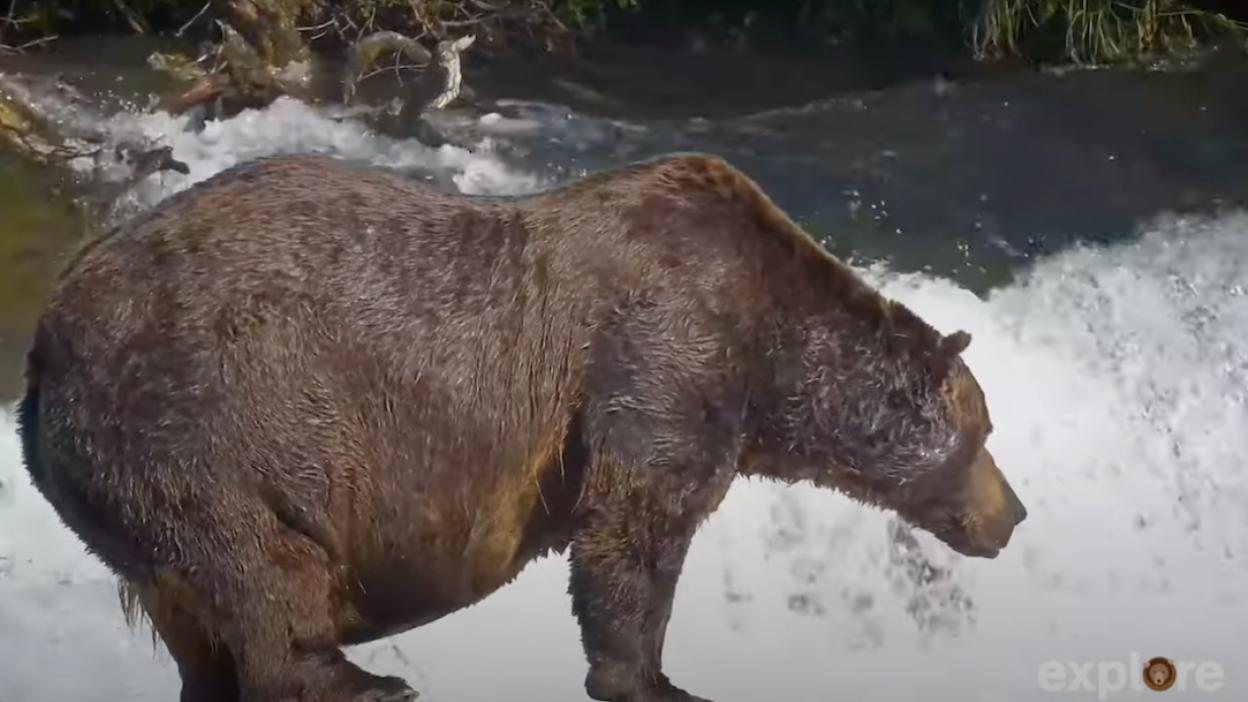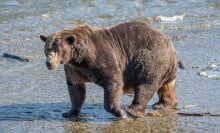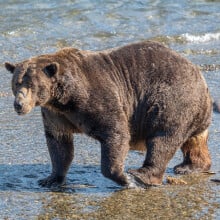Imagine not eating for half a year.
For the Alaskan bears of Katmai National Park and Preserve, the long winter famine always looms large. So they eat. And eat. And attempt to grow profoundly fat, because they must subsist off their fat stores for months. That's why, in this wild northern realm, a fat bear is a healthy bear.
One of the largest and most dominant bears of Katmai's Brooks River — a salmon-clogged region of the park that's livestreamed on explore.org — is bear 32, "Chunk." As a large dominant bear, he earns access to the most productive fishing spots, allowing an already large bear to grow huge.
"By all ursine measures, Chunk has been successful. He's perhaps the largest bear at Brooks River," Mike Fitz, a former Katmai park ranger and currently a resident naturalist for explore.org, told Mashable.
Fitz estimates Chunk currently weighs 1,200 pounds. And the bear still has a strong salmon-consuming month ahead.
A single sockeye salmon can pack around 4,000 calories. So a bear like Chunk, who repeatedly catches fish in the Brooks River, eats tens of thousands of calories per day. But on Aug. 26, Chunk outdid himself.
Avid bear cam observers, who document bear behavior throughout the summer, informed Fitz that Chunk ate a whopping 45 salmon in about 10.5 hours of fishing. Fitz has personally seen similar achievements, having watched the giant Katmai bear 747 consume 15 salmon in three hours.
"This is direct evidence of his hard work and success in preparation for winter hibernation."
The calories in each fish Chunk consumed likely varied this late in the season, as some fish have spawned (releasing eggs into a stream bed), and some haven't. Fitz estimates each fish contained an average of 3,000 calories.
"That would mean that Chunk consumed 135,000 calories in one day," Fitz marveled. "This is direct evidence of his hard work and success in preparation for winter hibernation."
Tweet may have been deleted
Tweet may have been deleted
These livestreamed cams capture an unfiltered view of bear behavior. Some of it is endearing, and sometimes it's harsh.
Chunk is often under the eye of the most watched camera, which is attached to a bear-viewing platform next to the river's waterfall. So his exploits are frequently observed. Earlier this summer, for reasons unknown, he attacked a cub that had fallen off the waterfall and passed near him in the river. In their hypercompetitive world, bears do sometimes attack each other or younger bears, but the impetus can remain uncertain.
"We get to see their moments of joy," Fitz said in an online live chat discussing the attack. "However, the webcams are live, the footage is uncensored. We also see bears face hardship, hunger, injury, pain, and even death."
In the coming month or so, Katmai's already rotund bears will continue to exploit any salmon left in the river. They'll lose up to one-third of their body weight during hibernation, so the more fat accumulation, the better odds of survival.
Each year, the park celebrates the success of these animals in their wild realm, an online event called Fat Bear Week. Chunk will clearly be a favorite. Though he'll certainly have some ursine competition.
"Chunk is poised to be a top contender in Fat Bear Week 2024," Fitz said.
Topics Animals





























